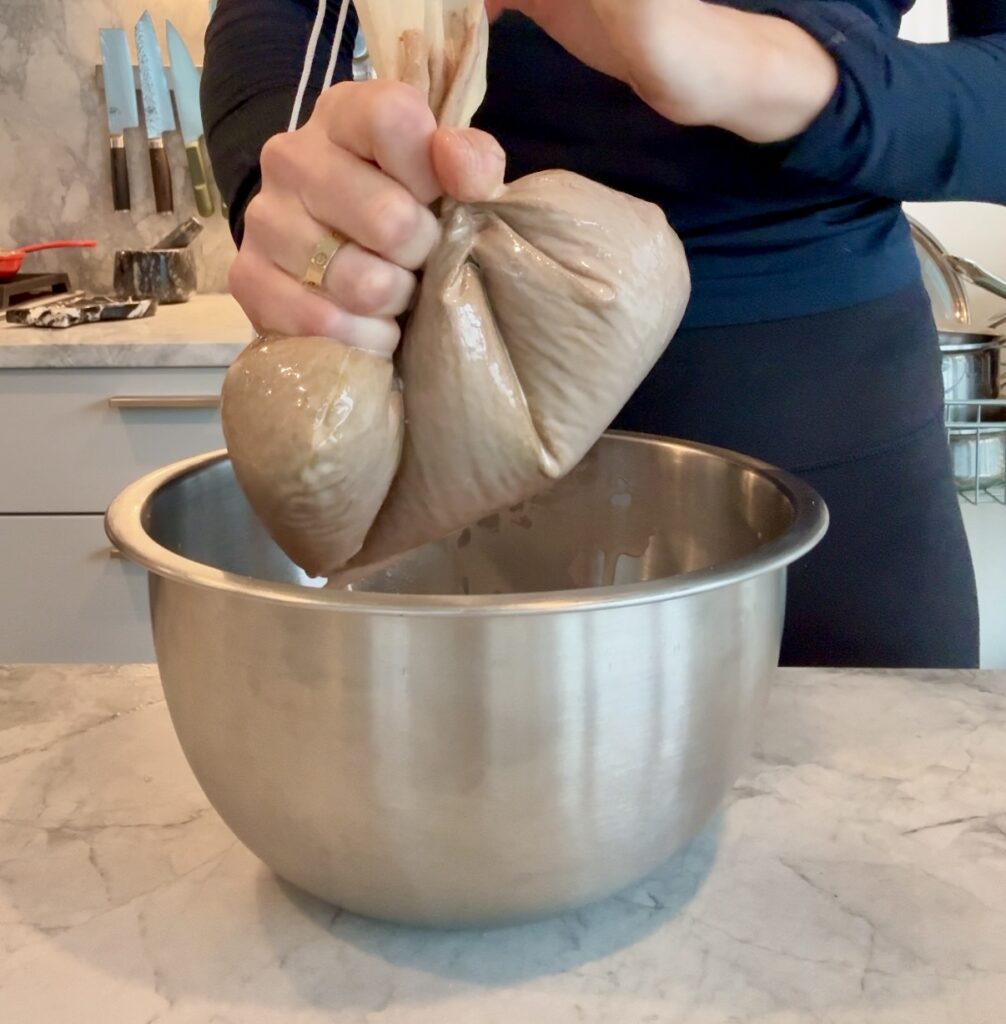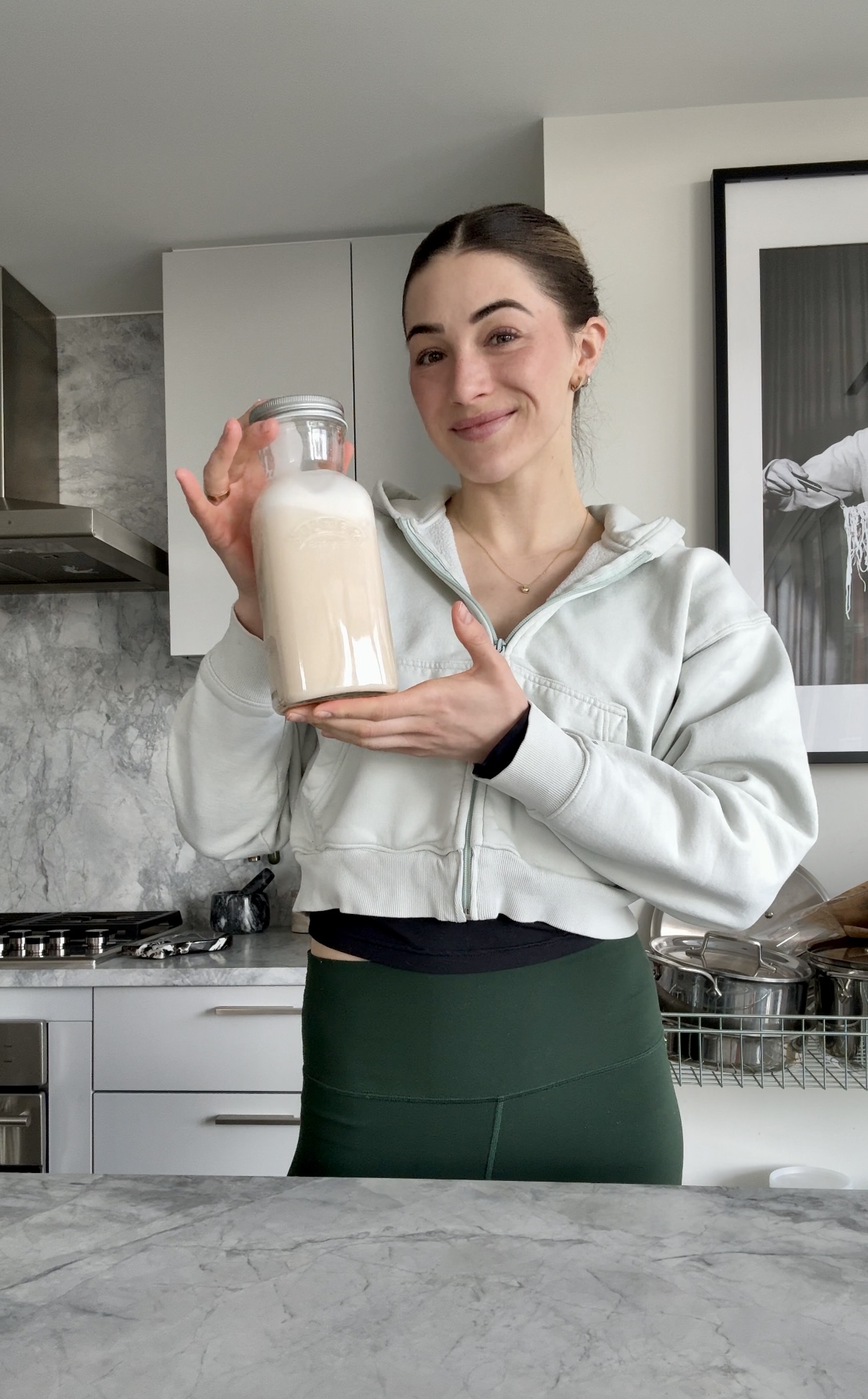You Can Make Almond Milk at Home – And When You Start You May Never Stop!
Almond milk is a popular dairy-free alternative that comes in a variety of different flavor profiles and is a wonderful addition to beverages and meals for those who don’t or can’t have dairy. What I have noticed that a lot of people don’t know about almond milk is just how easy it is to make from scratch – and how delicious the homemade version really is!
In 2021, I began learning about making almond milk when I created my food social media account, @oxbowfood (formerly known as @dinneratallis), because the recipe niche that I wanted to focus on (and have continued to since) was centered around using low to no-processed ingredients. I didn’t know how easy it was to make, and have since I’ve continued to make it almost weekly for my recipes and, of course, coffee.
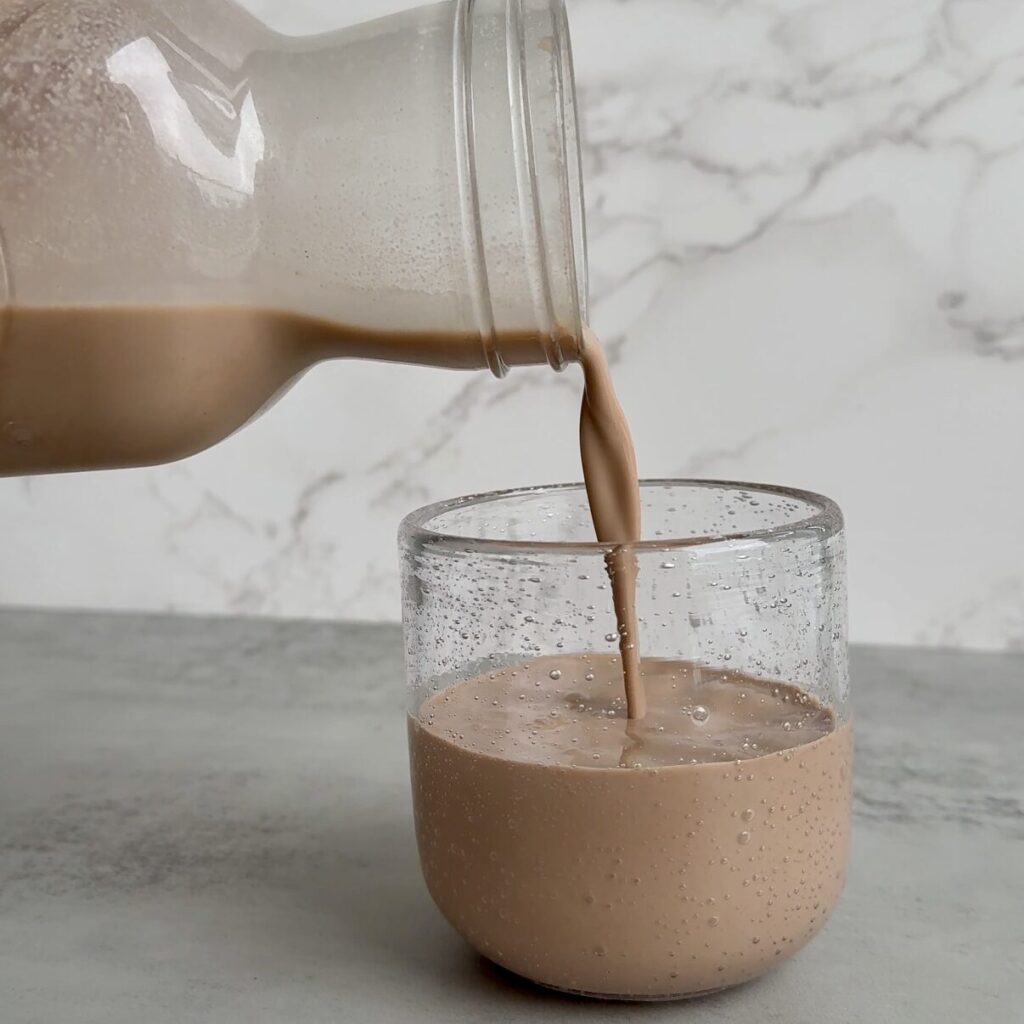
Is Making Almond Milk Hard?
Oftentimes when I post an almond milk-making video on social media I will receive comments and questions about it being a difficult or long process. The thing that takes the longest in this process is soaking your almonds – because almond milk is basically blended almonds and flavorings of choice, they need to be relatively soft to give you the creamiest milk possible.
Pre-soaking your almonds also makes it a lot easier for your blender to break them down. The ideal soak-time is overnight, but you can soak your almonds for as little as three hours before blending them up. Because of this, making your own almond milk may seem strenuous but it really just comes down to throwing your almonds in a bowl of water the night before, or a few hours before actually making your almond milk.
How to Make Almond Milk at Home
Above, we discussed the importance of pre-soaking your almonds as the first step in the homemade almond milk process. Once your almonds have soaked and softened, you’ll want to strain and rinse them using a colander until the water runs clear. Once rinsed, transfer your clean and softened almonds into your blender vessel. Next, you’ll add in your water and flavorings – my most common additions include honey, cinnamon, salt, and vanilla. Blend everything up for 30-seconds to 1-minute – at this point, you should have a milky liquid with almond skin flecks in it.
The final step after blending all of your ingredients is straining the almond milk from the almond pulp (basically all of the leftover almond chunks that didn’t smooth out in the blender). To do this, place a nut milk bag over a large bowl and pour your liquid into it, and then pull the bag drawstring closed so that no additional almond pulp comes out of the top. If you do not have a nut milk bag you can alternatively use a cheesecloth. Squeeze until all of the liquid has separated from the almond pulp and then transfer your almond milk into a jug with a lid.
Store your homemade almond milk in the fridge for up to a week and enjoy!
Customizing Your Homemade Almond Milk
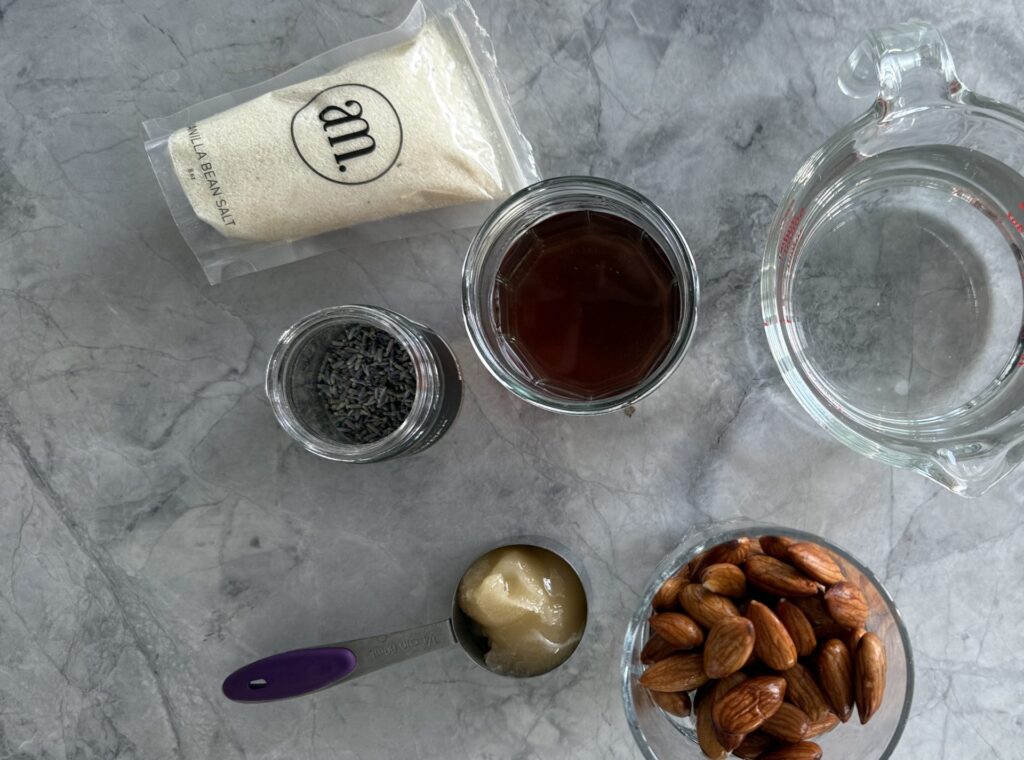
One of the best things about making almond milk from scratch is that you can customize it to meet your needs – from health goals to flavor, you can pretty much add whatever you want! The go-to almond milk flavor that I find myself making continuously is my classic Cinnamon Vanilla Almond Milk, but I also love switching it up some weeks and doing a creamy Strawberry Almond Milk or vibrant Blueberry Almond Milk as well.
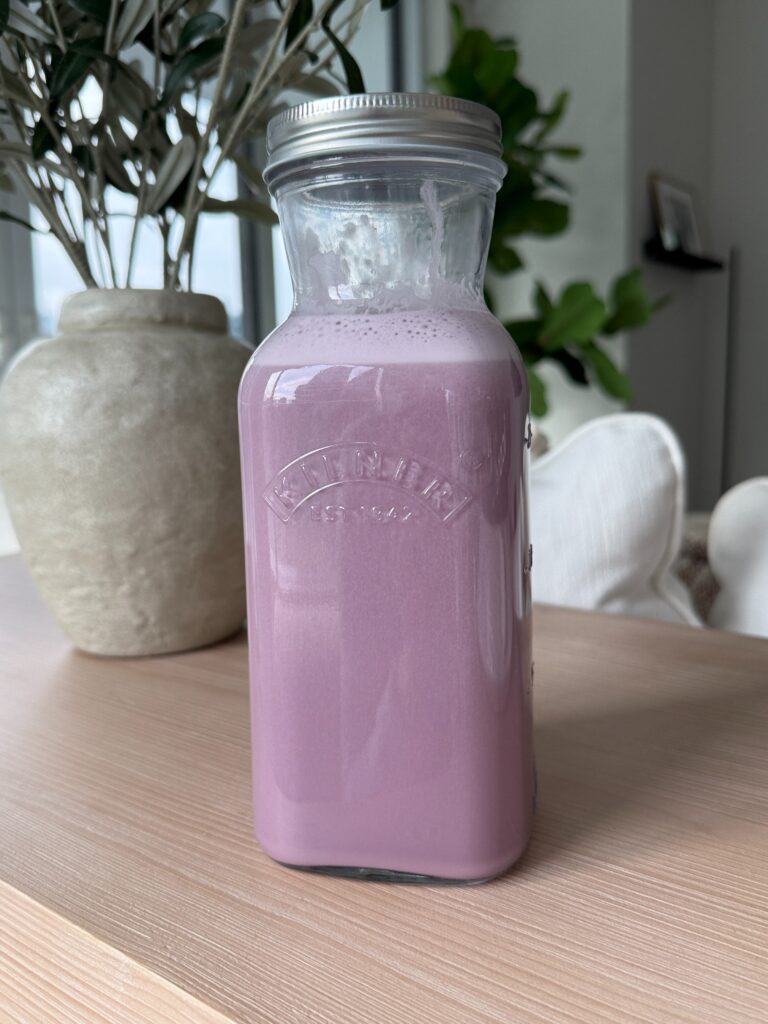
Store bought almond milks generally contain added sugars and/or gums; in this homemade almond milk, the only sweetener I use is organic honey. It’s easy to adjust the sweetness of the almond milk using honey, but you can also opt to leave it out altogether for an unsweetened beverage. If you want to make a vegan almond milk, you can substitute maple syrup for the honey.
Adding spices to your almond milk is one of the easiest ways to give it extra flavor. You can also use fresh berry compotes to add unique, natural flavor and color.
The Perfect Almond to Water Ratio
One of the things that I have continuously tweaked throughout my years of making almond milk is the almond to water ratio. Almonds are expensive, and they tend to go a long way when making almond milk so you really don’t need to go overboard with them. On the other hand, you don’t want to add too much water and not enough almonds because you won’t get the creamy, milky consistency that almond milk should have. A 3:1 water to almond ratio is what I use when making almond milk – I find that this ratio gives the milk the perfect creamy consistency and almond flavor.
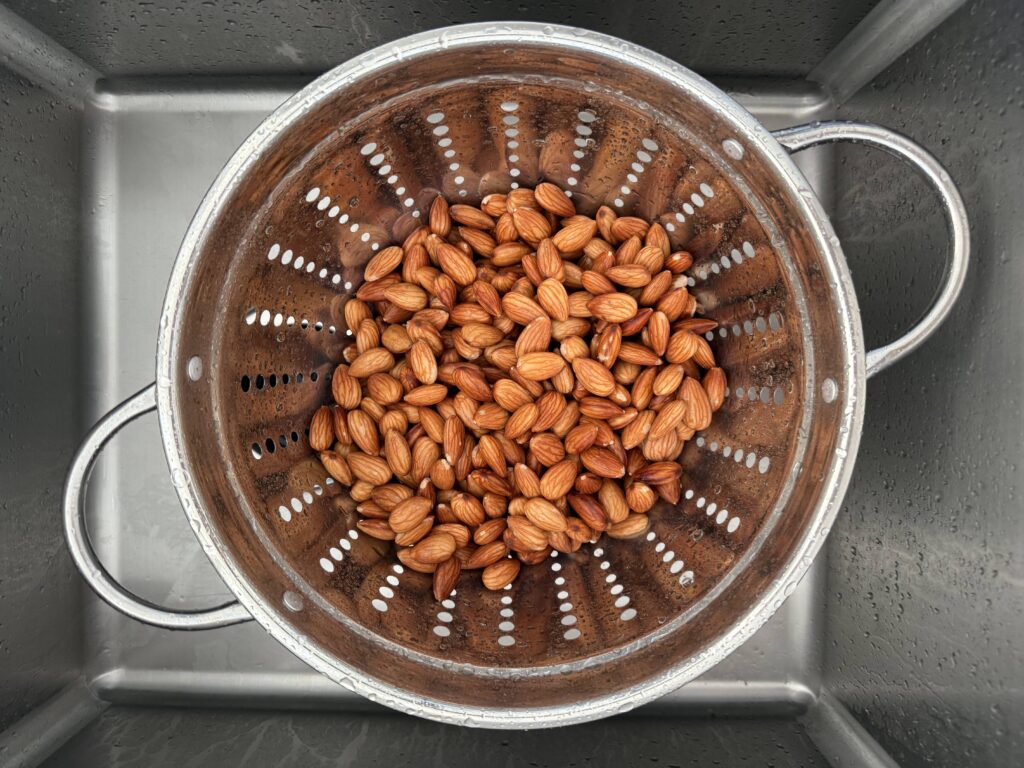
The Reason I Cook From Scratch (Almond Milk Included, Of Course)
Why cook from scratch when store bought is easier?
The answer seems pretty obvious but not at the same time. In today’s world, especially in North America, we have so much access to foods that we sometimes shouldn’t. I didn’t actually realize this until I went to cooking school in Calabria, Italy and we visited a public market where they were selling only produce that was in season (and we were learning to cook with only produce that was in season…). In America, you can buy berries year-round. Of course, this doesn’t mean they’ll necessarily be good, but you still can. In countries like Italy, you make what grows and that’s that. Food isn’t ultra-processed most of the time either, whereas in North America it’s difficult to find food that isn’t processed in some way unless you’re shopping at a local farmer’s market.
When I used to go to the store for almond milk, the only ones that I could find either contained gums and other additives, were in a cardboard or plastic container, or both. I found it pretty impossible to find something pure, which I didn’t want to compromise with since I put almond milk in my coffee daily, so I started making it myself to know exactly what was going in it and how it was stored. I have noticed that my body processes homemade foods like almond milk a lot easier than store bought, processed ones, so I’ve continued to make this among other homemade ingredients that I use on a daily and weekly basis.
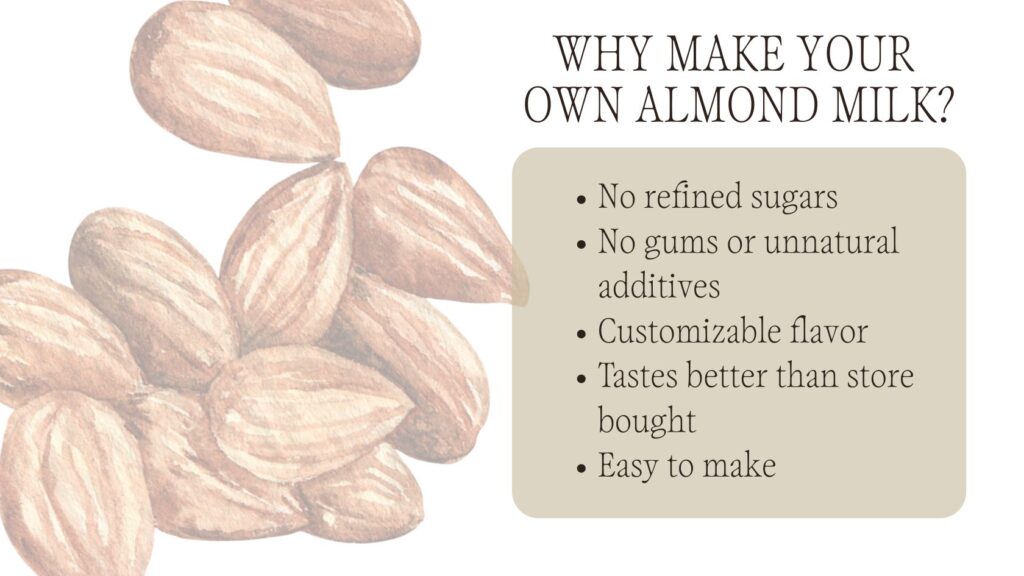
I am not a registered dietician, but I do believe that cooking from scratch has had an extremely positive impact on my own personal health. To get to a more granular level, in 2024, my doctor discovered that my body produces antibodies that attack my thyroid and recommended that I follow an anti-inflammatory diet. Making simple, every day ingredients from scratch in conjunction with cooking meals with whole foods has helped improve my symptoms tremendously.
